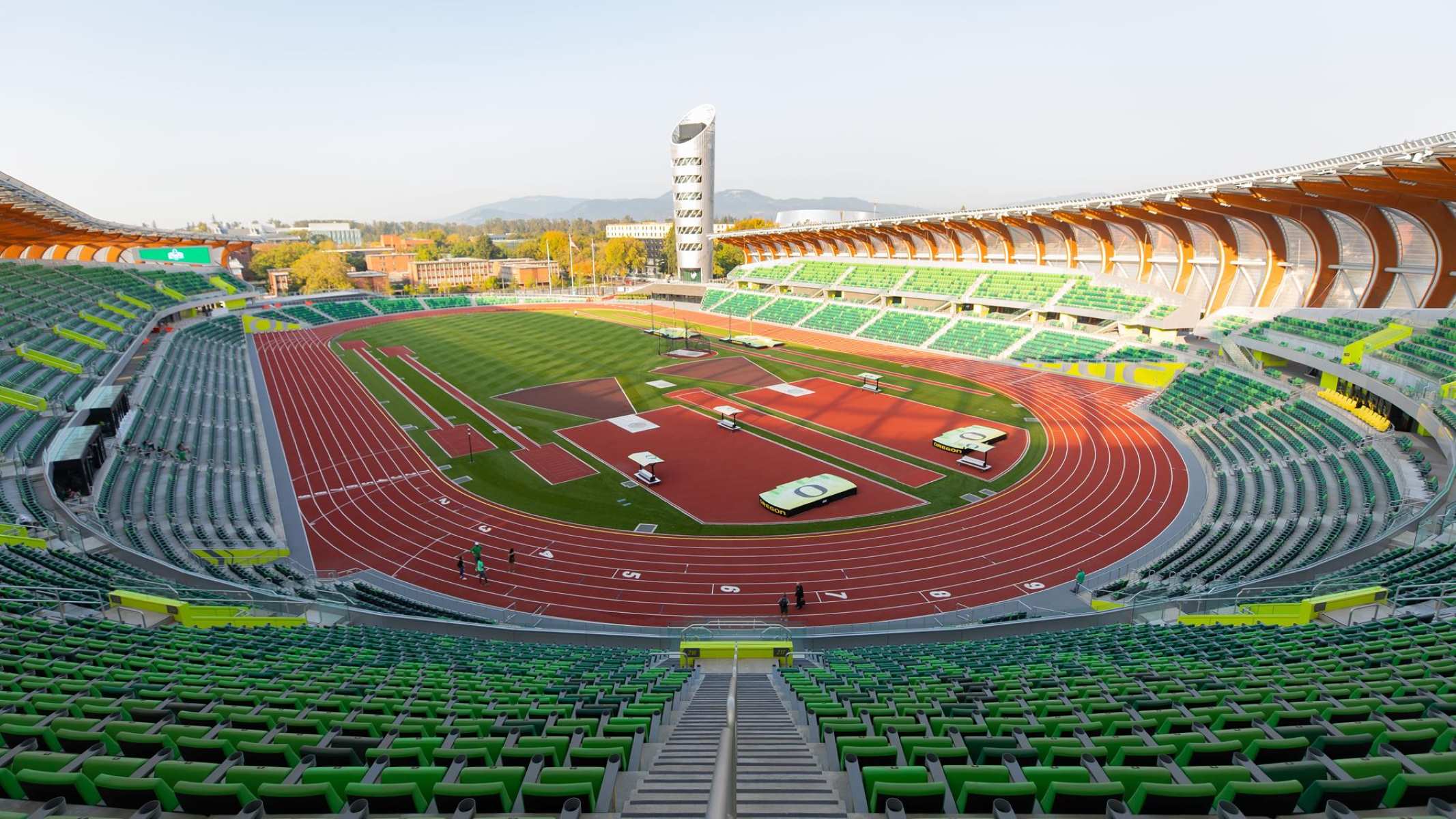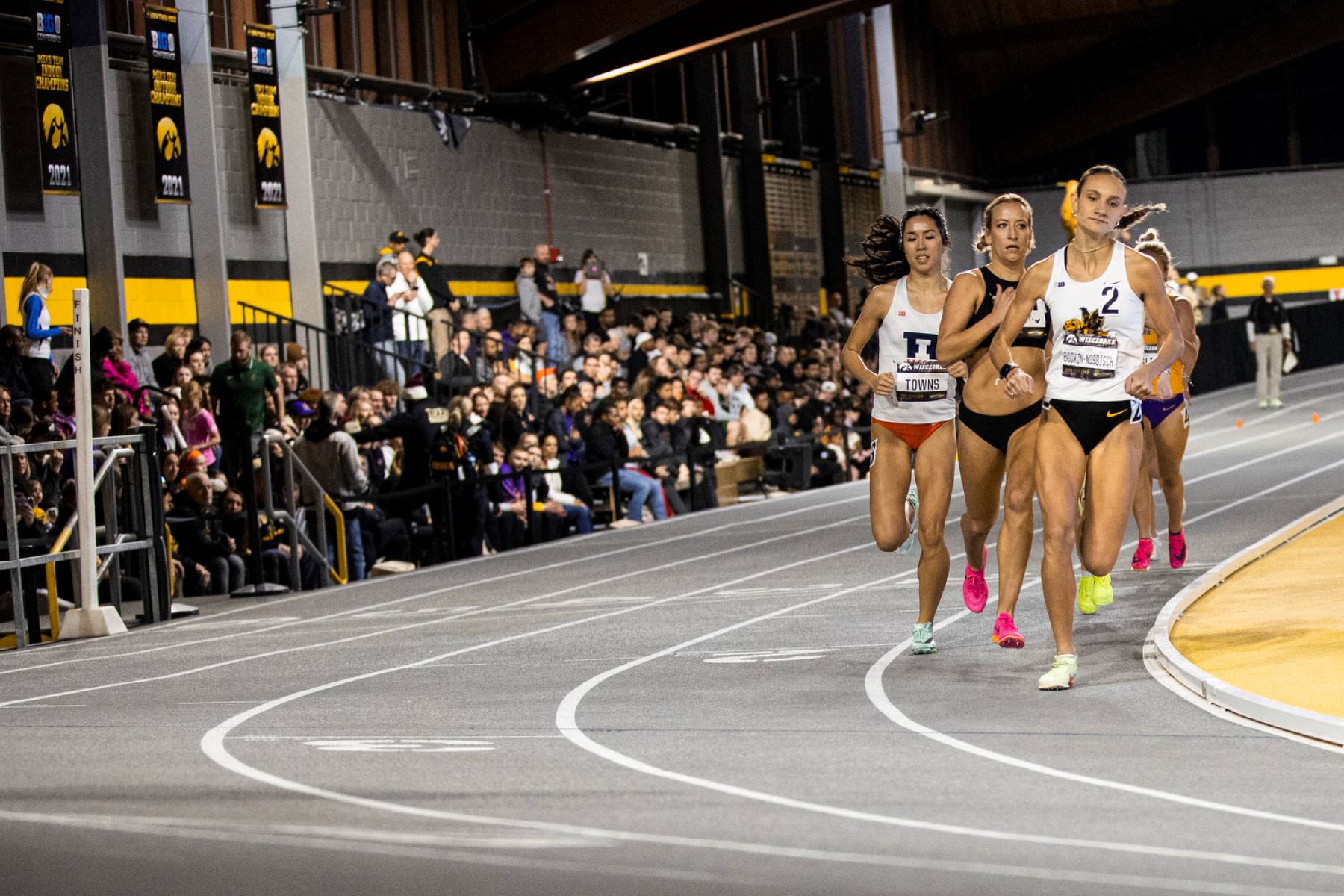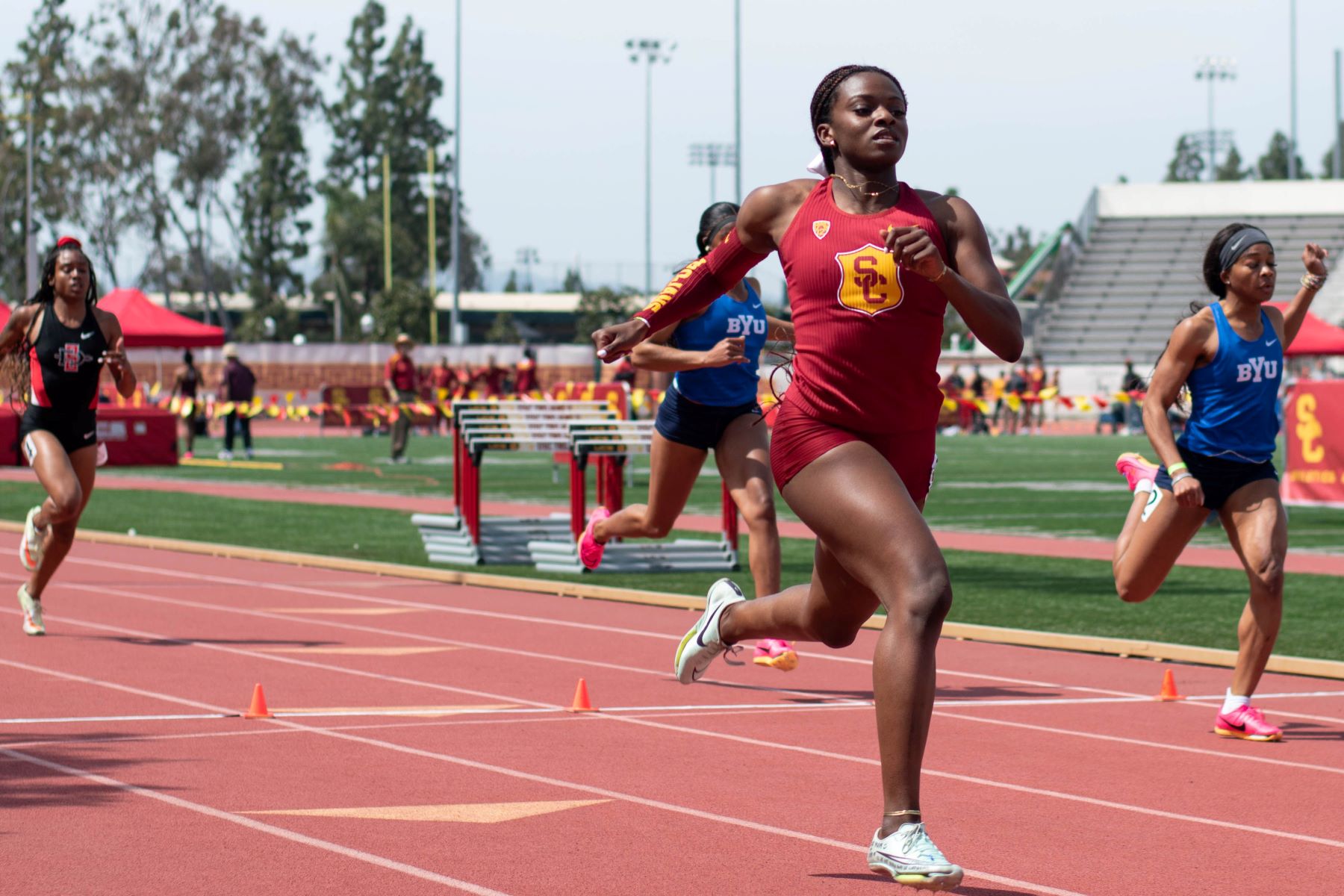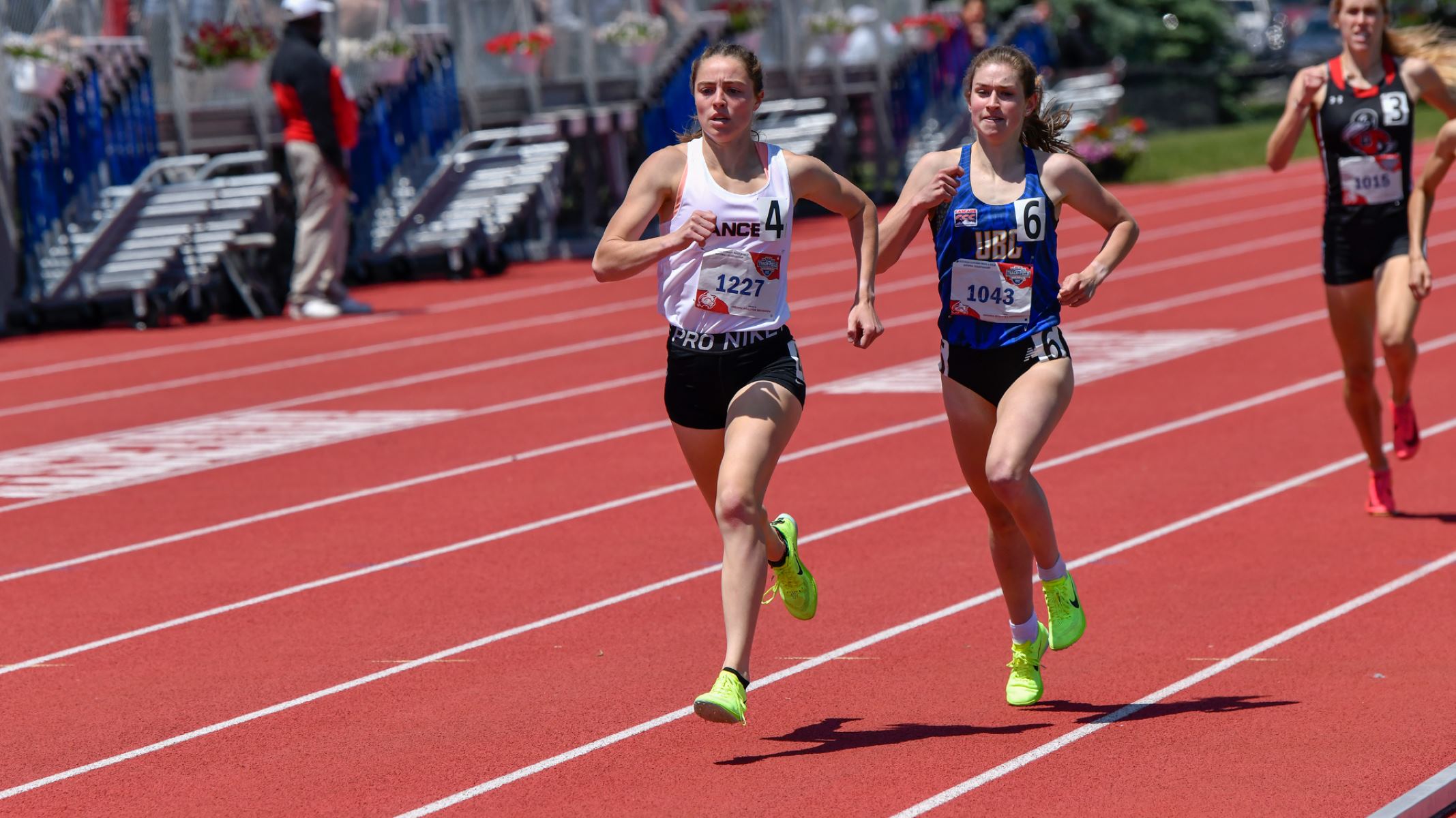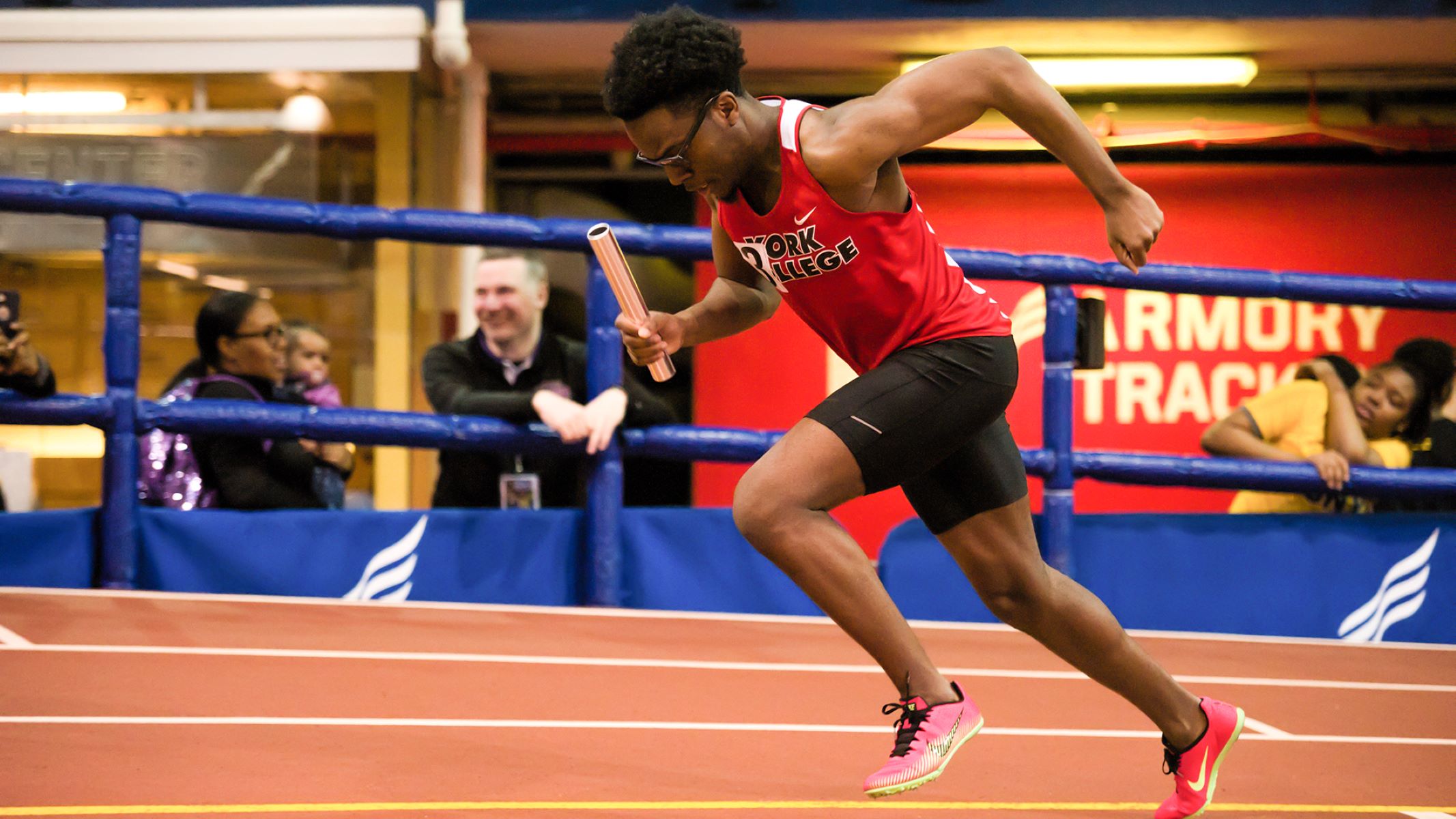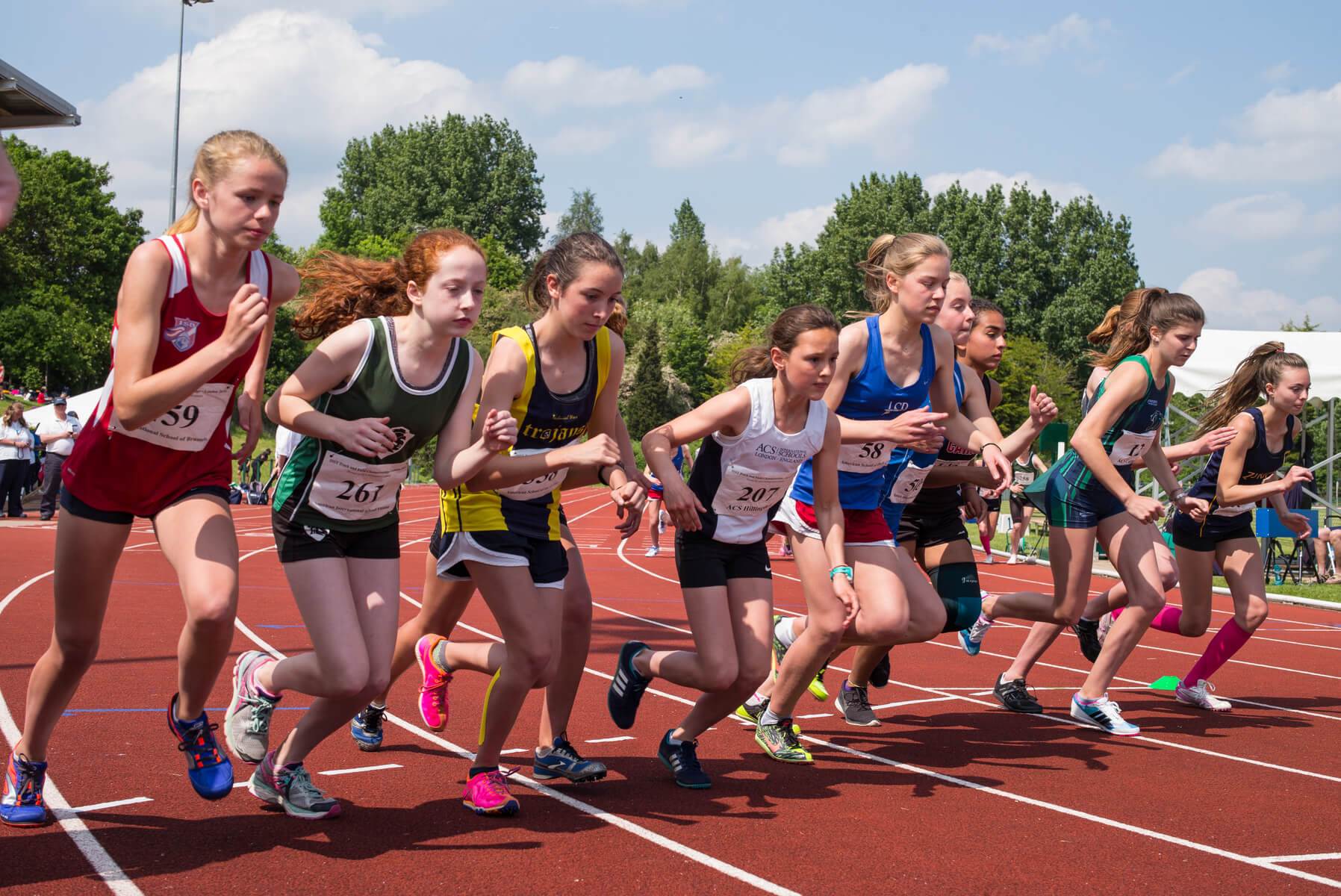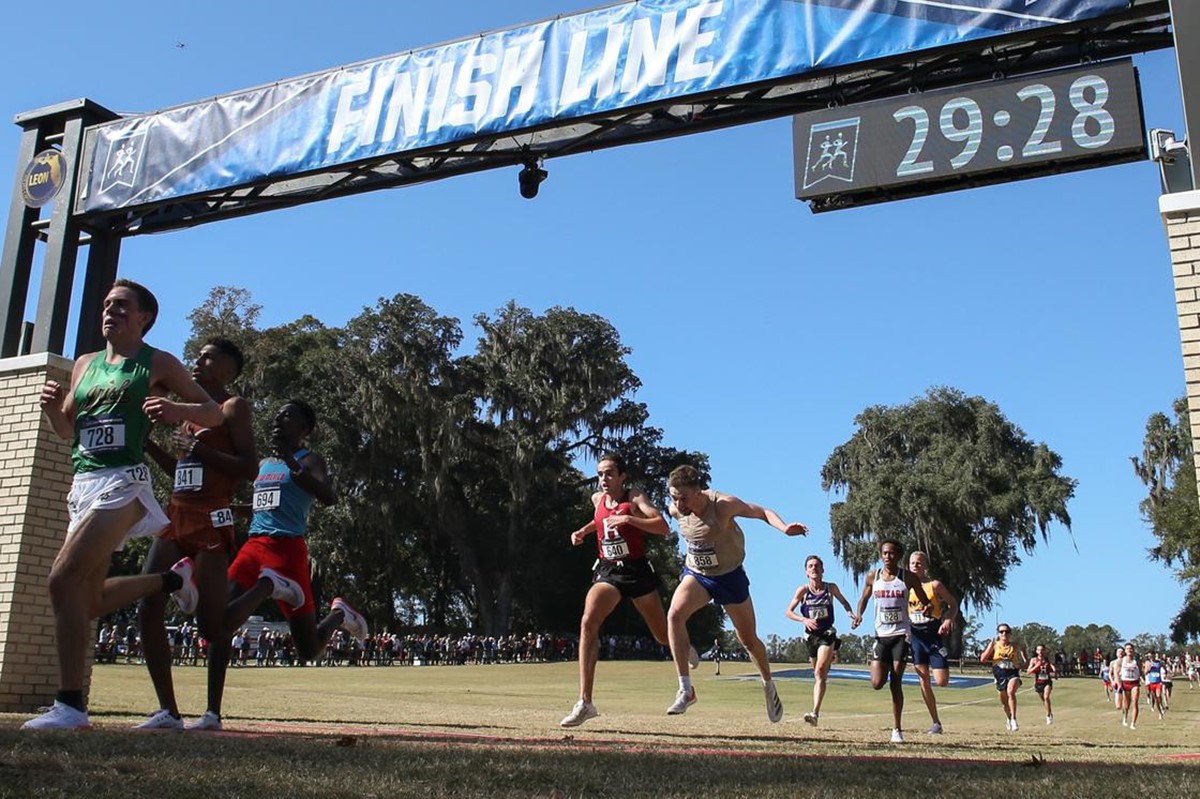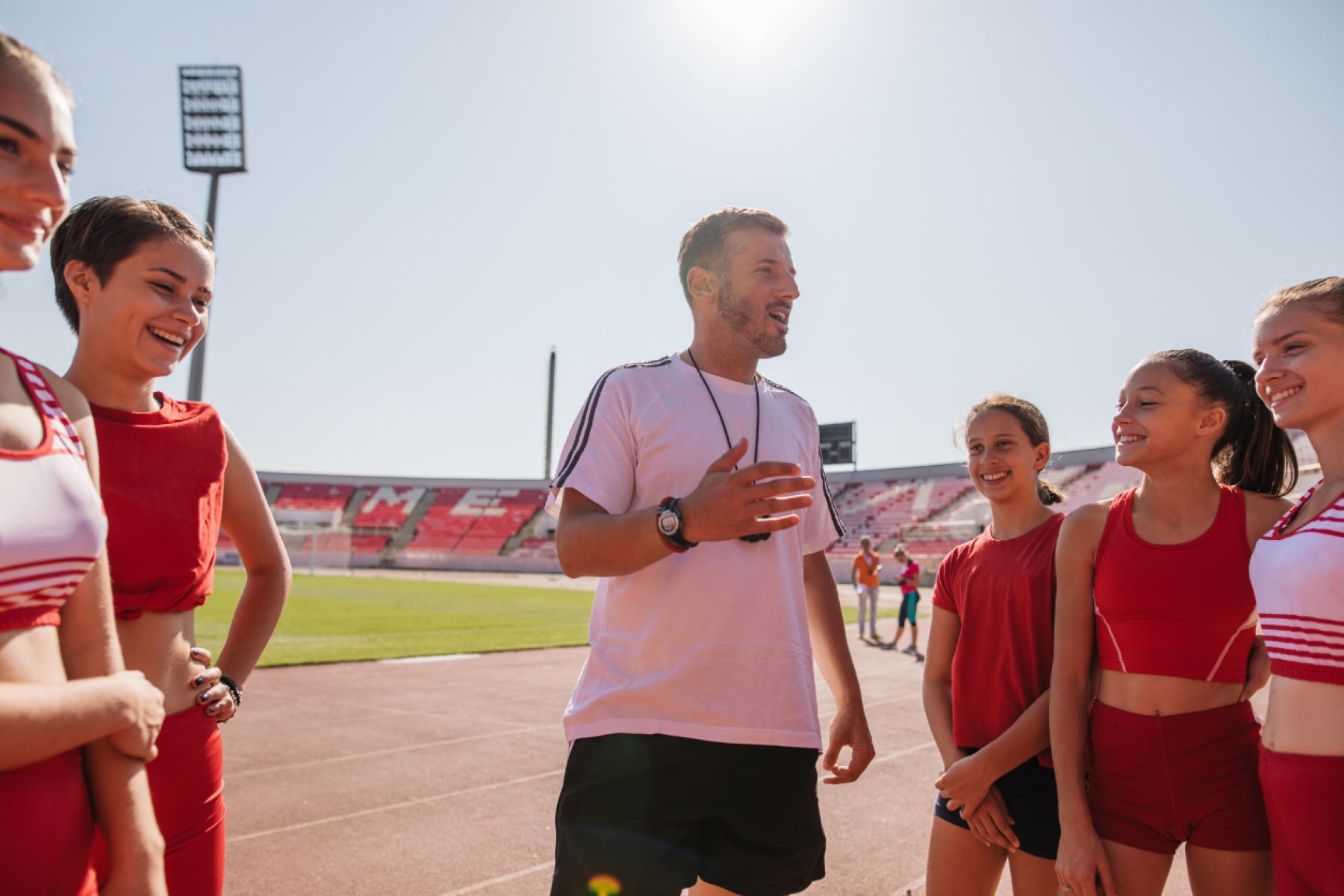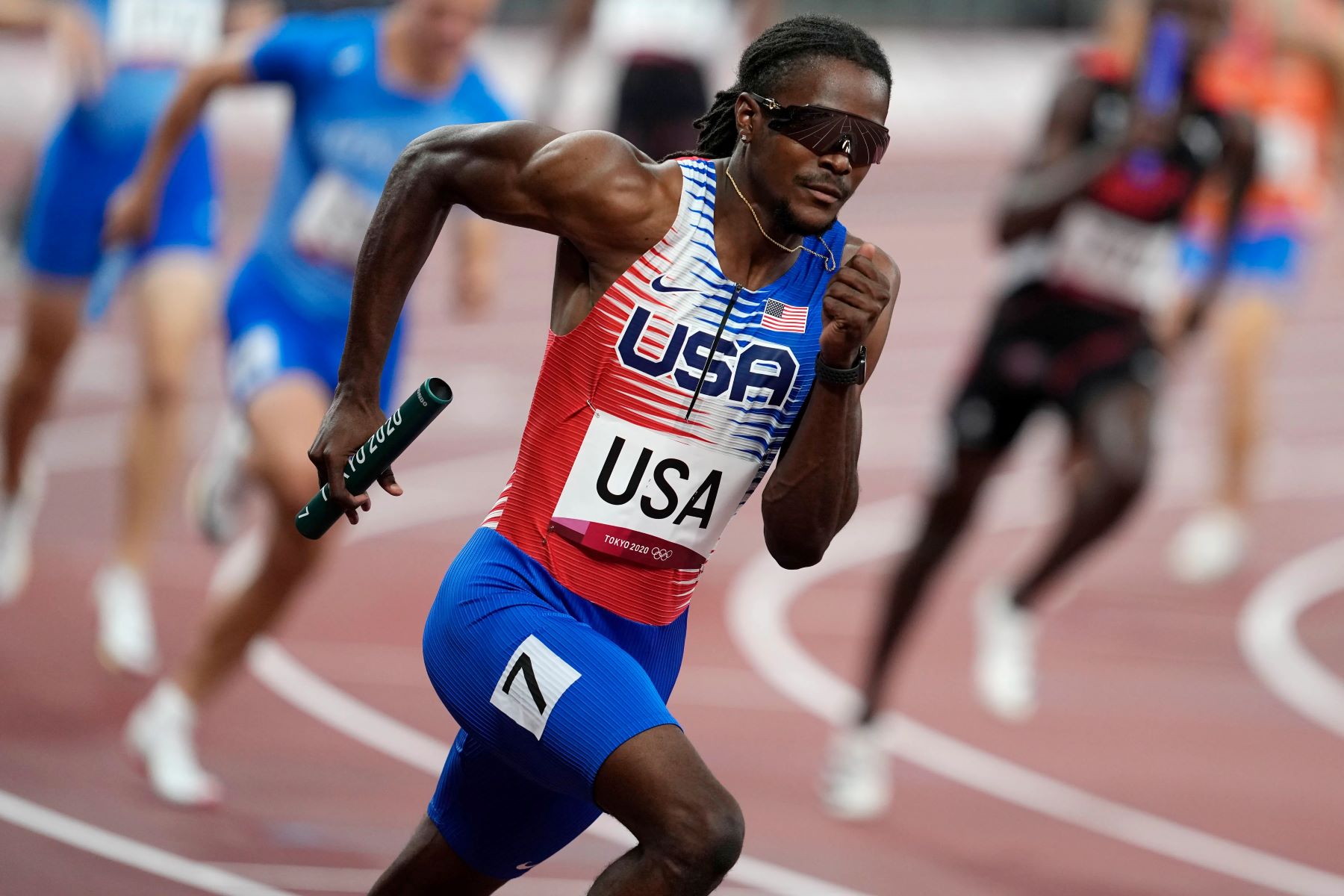

Featured
What Are The NCAA Track And Field Events
Modified: January 2, 2024
Learn about the variety of NCAA track and field events, from sprints to hurdles, jumps to throws. Discover key highlights and information on featured events
Introduction
Track and field is a sport that dates back to ancient times and continues to be one of the most popular athletic events in modern times. It showcases the raw athleticism and competitive spirit of athletes as they compete in various events, pushing themselves to achieve new personal records and compete against the best in the world. The sport is organized by various governing bodies, with the NCAA being one of the most influential and prestigious.
The National Collegiate Athletic Association (NCAA) oversees track and field events at the collegiate level in the United States. These events offer a platform for student-athletes to showcase their talents, earn scholarships, and compete against their peers from other universities.
NCAA track and field events encompass a broad range of disciplines, from sprints to long-distance races, from jumping to throwing events, and from individual contests to team relays. Each event requires different skill sets and specialized training, making track and field a multifaceted and captivating sport for athletes and spectators alike.
In this article, we will explore the various track and field events contested in NCAA competitions. We will delve into the nuances and strategies of each event, highlighting the elite performances and athletes that have left an indelible mark on the sport’s history. Whether you are a track enthusiast, a college athlete, or simply curious about the world of track and field, this article will provide a comprehensive overview of the NCAA track and field events.
Sprint Events
Sprint events in NCAA track and field are all about speed and explosiveness. These events include the 100-meter dash, 200-meter dash, and 400-meter dash. Athletes in these events showcase their ability to cover short distances in the shortest amount of time, relying on explosive power, technique, and mental fortitude.
The 100-meter dash is often considered the marquee event of the sprint category. Athletes explode out of the starting blocks, reaching top speeds in a matter of seconds. The winner is determined by who crosses the finish line first, making it a race where every millisecond counts. Legendary sprinters like Carl Lewis, Florence Griffith-Joyner, and Usain Bolt have made their mark in the 100-meter dash, setting world records that continue to inspire future generations.
The 200-meter dash is a slightly longer sprint, requiring athletes to maintain their top speed for a longer duration. It requires a strong mix of speed, endurance, and efficient running form. The winner of this event demonstrates the ability to maintain an impressive pace throughout the entirety of the race, often finishing with a powerful burst of speed in the final straightaway.
Finally, the 400-meter dash is a demanding event that combines speed and endurance. Athletes must pace themselves strategically, as they must maintain a high speed for an entire lap around the track. This event tests not only physical capabilities but also mental resilience, as athletes must push through pain and fatigue to finish strong. The 400-meter dash often requires a combination of sprinting and tactics, with athletes balancing their energy expenditure to maintain maximum speed.
Sprint events are known for their electrifying atmosphere, with spectators on the edge of their seats as these athletes push their bodies to the limit. Whether it’s the explosive start, the incredible speed, or the thrilling photo finishes, sprint events captivate audiences and highlight the incredible athleticism of track and field athletes.
Middle Distance Events
Middle distance events in NCAA track and field encompass races that require a balance of speed, endurance, and tactical prowess. These events include the 800-meter run and the 1500-meter run.
The 800-meter run is a challenging event that demands a unique blend of endurance and speed. Athletes must find the perfect balance between a brisk pace and the ability to finish strong. The race strategy often involves positioning oneself strategically in the early stages, conserving energy for a final push towards the finish line. The winner of the 800-meter run demonstrates not only physical strength but also mental acuity in executing an effective race plan.
The 1500-meter run is a more endurance-based event, requiring athletes to maintain a consistent pace over 3.75 laps around the track. This event tests an athlete’s ability to sustain a high level of effort over a longer distance, as well as their ability to strategize and tactically outperform their competitors. The 1500-meter run showcases the mental and physical fortitude of athletes who can dig deep and find that extra burst of speed at crucial moments in the race.
Both the 800-meter run and the 1500-meter run demand a unique combination of speed, endurance, and race strategy. Athletes must possess not only the physical capabilities to maintain a demanding pace but also the mental discipline to make split-second decisions that can make the difference between victory and defeat.
These events often produce thrilling finishes, with athletes pushing themselves to their limits and fighting for every inch of track. The middle distance events provide a perfect balance between speed and endurance, captivating spectators and showcasing the tactical brilliance of track and field athletes.
Long Distance Events
Long distance events in NCAA track and field test an athlete’s endurance, mental resilience, and ability to maintain a steady pace over extended distances. These events include the 3000-meter run, 5000-meter run, and 10000-meter run.
The 3000-meter run is a challenging distance that requires a balance of speed and endurance. Athletes must maintain a consistent pace over 7.5 laps around the track, showcasing their ability to sustain a demanding effort for an extended period. The race often involves strategic positioning, as athletes jockey for the best position to make a decisive move and maintain their speed in the final sprint.
The 5000-meter run is an even more grueling event, testing an athlete’s ability to endure and push through physical and mental fatigue. Covering 12.5 laps around the track, athletes must maintain focus, rhythm, and a strong mental mindset to sustain a challenging pace. The 5000-meter run requires a combination of endurance, speed, and mental toughness to excel in this demanding event.
Finally, the 10000-meter run is the longest distance event in NCAA track and field. Competing over 25 laps around the track, athletes face the ultimate test of endurance. This event demands extraordinary mental and physical strength, as athletes must dig deep and push through pain and fatigue to complete the race. Success in the 10000-meter run requires not only exceptional endurance but also the ability to strategize and make decisive moves at the right moments.
Long distance events often feature remarkable displays of willpower and determination as athletes push themselves to the limit. Whether it’s the ability to maintain an intense pace, execute strategic moves, or summon a final surge of energy in the closing stages of the race, these events showcase the impressive fortitude and dedication of long-distance runners in NCAA track and field.
Hurdles Events
Hurdles events in NCAA track and field showcase the combination of speed, agility, and technique. Athletes must navigate a series of hurdles placed along the track while maintaining their stride and momentum. These events include the 110-meter hurdles and the 400-meter hurdles.
The 110-meter hurdles is a thrilling event that requires explosive power and precise technique. Athletes sprint down the track, timing their strides to clear 10 evenly spaced hurdles. The event demands quick reactions, coordination, and the ability to maintain a consistent rhythm. Athletes must not only clear the hurdles efficiently but also maintain their speed between each hurdle to minimize the impact on their overall time. The winner of the 110-meter hurdles demonstrates exceptional speed, agility, and impeccable hurdling technique.
The 400-meter hurdles add an extra layer of endurance to the hurdling challenge. Athletes must navigate 10 hurdles spread across a full lap of the track. This event demands both strength and stamina, as athletes must maintain a high pace while executing smooth and efficient hurdle clearance techniques. The 400-meter hurdles require athletes to exhibit excellent rhythm, endurance, and mental toughness to push through fatigue and maintain the intensity needed to perform at a high level.
Both the 110-meter hurdles and the 400-meter hurdles require a specialized set of skills and precise timing. Athletes must possess not only exceptional speed but also the ability to smoothly transition over the hurdles without disrupting their stride. The hurdles events bring an added level of excitement and challenge to NCAA track and field, captivating audiences with the remarkable athleticism and precision of the athletes.
Relay Events
Relay events in NCAA track and field emphasize teamwork, coordination, and seamless transitions between athletes. These events involve a team of four runners, each completing a designated distance before passing a baton to the next runner. The relay events include the 4×100-meter relay and the 4×400-meter relay.
The 4×100-meter relay is a high-speed event that requires athletes to display exceptional speed, precision, and baton exchange skills. Each member of the team sprints 100 meters, creating a seamless transition as they hand off the baton to the next runner. This event demands not only individual speed but also the ability to synchronize with teammates to maintain speed and execute smooth baton exchanges. The 4×100-meter relay emphasizes the importance of teamwork and coordination, as the slightest mishap during a baton exchange can cost the team valuable time.
The 4×400-meter relay is a more complex event that combines speed, endurance, and strategy. Each member of the team completes a full lap around the track, totaling 400 meters. The handoff between runners becomes a critical element of the race, as any mistakes or disruptions can significantly impact the team’s overall performance. The 4×400-meter relay demands not only individual speed and endurance but also strategic planning of the order in which team members run to maximize the team’s overall speed and potential for success.
Relay events bring an added layer of excitement to NCAA track and field competitions. The coordination required for baton exchanges, the exhilaration of watching multiple athletes compete as a team, and the strategic decision-making create a unique dynamic that sets relay events apart. These events not only showcase the individual talents of each athlete but also emphasize the power of teamwork and collaboration in achieving success.
Jumping Events
Jumping events in NCAA track and field showcase athletes’ ability to generate explosive power, precision, and technique to achieve remarkable heights and distances. These events include the high jump, long jump, and triple jump.
The high jump is a visual spectacle as athletes attempt to clear a bar set at increasingly higher heights. Athletes must approach the bar with speed and use a technique known as the Fosbury Flop or the straddle technique to clear the bar without knocking it down. The high jump requires a unique combination of speed, flexibility, and timing, as athletes must contort their bodies over the bar at the peak of their jump. It is a test of both physical ability and mental focus, as athletes aim to soar to new heights.
The long jump is a thrilling event that showcases an athlete’s ability to generate speed, explosive power, and precise takeoff techniques. Athletes sprint down a runway before leaping into a sandpit, trying to achieve the longest distance. The long jump demands a blend of speed, technique, and coordination, as athletes must time their takeoff, execute a powerful jump, and maintain proper body positioning in the air. The event often comes down to a matter of inches, with athletes striving to achieve personal bests and set new records.
The triple jump is a dynamic event that combines speed, power, and technique to achieve impressive distances. Athletes execute a hop, step, and jump sequence, aiming to maximize each phase to gain momentum and distance. The triple jump requires precise timing and coordination of movements, as athletes must maintain their speed and rhythm throughout all three phases without fouling. It demands not only explosive power but also impeccable technique to ensure optimal results.
Jumping events in NCAA track and field captivate audiences with the remarkable displays of athleticism and physical prowess. The ability to generate speed, execute precise takeoffs, and maintain body control in mid-air showcases the exceptional talents of athletes who take part in these events.
Throwing Events
Throwing events in NCAA track and field highlight the strength, technique, and precision required to launch various objects to great distances. These events include the shot put, discus throw, hammer throw, and javelin throw.
The shot put involves athletes propelling a heavy spherical object known as a shot as far as possible. Athletes must generate tremendous power from their lower body and transfer it through their arms, releasing the shot with proper technique. The shot put demands strength, explosiveness, and a well-timed release to achieve maximum distance. Athletes strive to surpass personal records and showcase their ability to launch the shot with impressive force.
The discus throw requires athletes to exhibit exceptional technique and coordination while launching a heavy disc-shaped object. Athletes rotate within a restricted area before releasing the discus with precision and power. The discus throw challenges athletes to generate centrifugal force and leverage their upper body strength to propel the discus as far as possible. It is a display of skill and finesse, as athletes strive to achieve optimal release angles and maximize their distances.
The hammer throw is a unique event that involves athletes spinning in a circle while holding a heavy metal ball attached to a handle. Athletes generate momentum through the rotation and then release the hammer with tremendous force. The hammer throw requires great strength, speed, and coordination, as athletes must maintain control of the implement while executing a powerful and well-timed release. It is a visually impressive event that showcases the physical prowess and technique of the athletes involved.
The javelin throw is a classic event that dates back to ancient times. Athletes launch a long spear-like implement, attempting to achieve the farthest distance. The javelin throw requires a combination of strength, speed, technique, and precision. Athletes must generate speed during the run-up, transfer their energy into the javelin, and release it with proper technique to obtain maximum distance. The event demands not only exceptional physical abilities but also an understanding of the optimal angles and trajectory needed for a successful throw.
Throwing events in NCAA track and field exhibit the power and finesse of the athletes involved. Whether it’s the explosive force of the shot put, the controlled technique of the discus throw, the rotational power of the hammer throw, or the precise release of the javelin, these events highlight the impressive throwing abilities of NCAA track and field athletes.
Combined Events
Combined events in NCAA track and field are multi-discipline competitions that test an athlete’s versatility, endurance, and all-around abilities. The two main combined events are the decathlon for men and the heptathlon for women.
The decathlon consists of ten different events spread over two days. Athletes compete in the 100-meter dash, long jump, shot put, high jump, 400-meter run, 110-meter hurdles, discus throw, pole vault, javelin throw, and finally, the 1500-meter run. The decathlon requires athletes to excel in both track and field events, showcasing a wide range of athletic abilities. It demands physical strength, speed, endurance, agility, and technical skills. Participants accumulate points based on their performance in each event, with the athlete achieving the highest total score crowned as the decathlon champion.
The heptathlon, on the other hand, consists of seven events over two days. Women compete in the 100-meter hurdles, high jump, shot put, 200-meter run, long jump, javelin throw, and 800-meter run. Similar to the decathlon, the heptathlon requires participants to demonstrate a diverse skill set across varied disciplines. Competitors must showcase a combination of speed, agility, strength, technique, and endurance to excel. Points are awarded based on performance in each event, with the athlete accumulating the highest total score declared as the heptathlon champion.
Combined events demand a unique blend of physical and mental prowess. Athletes must be well-rounded and excel in multiple aspects of track and field to succeed in these comprehensive competitions. They must not only possess exceptional individual abilities but also possess the tactical intelligence to plan their performances strategically to maximize their overall score.
The decathlon and heptathlon embody the ultimate test of an athlete’s all-around abilities, showcasing their versatility, endurance, and determination. Participants in these events represent the epitome of athleticism in NCAA track and field, captivating spectators with their impressive performances and inspiring future athletes to strive for excellence across multiple disciplines.
Conclusion
NCAA track and field offers a thrilling and diverse array of events that showcase the incredible athleticism, skill, and determination of its athletes. From the explosive speed of the sprint events to the endurance and strategy of the long-distance races, each event brings its own unique challenges and demands.
The sprint events, such as the 100-meter dash and the 400-meter dash, captivate with their sheer intensity and photo-finishes. Middle distance events, like the 800-meter run and the 1500-meter run, require a delicate balance of speed and endurance. The hurdles events showcase the agility and precision of athletes as they navigate the barriers with finesse.
Throwing events, including the shot put, discus throw, hammer throw, and javelin throw, highlight the power and technique required to launch various objects to great distances. The jumping events, such as the high jump, long jump, and triple jump, demonstrate the explosive power and precise technique of athletes as they soar through the air.
The relays events display the importance of teamwork and coordination, with athletes seamlessly passing the baton to achieve optimal speed. Lastly, the combined events, the decathlon and heptathlon, test athletes’ versatility with a range of disciplines that emphasize endurance, skill, and mental fortitude.
Each event in NCAA track and field carries its own allure, captivating spectators with its fast-paced action, raw athleticism, and moments of triumph. These events have produced legendary athletes who have left an indelible mark on the sport’s history.
As NCAA track and field continues to evolve, athletes push themselves to new heights, striving for personal bests, conference championships, and national titles. The dedication, discipline, and incredible feats of these athletes inspire us all to pursue our own goals and challenges.
So, whether you are an athlete, a fan, or someone curious about the sport, NCAA track and field provides a captivating and exciting world to be explored. The events bring together competitors who demonstrate unparalleled skill, dedication, and passion, creating moments that will be remembered for generations to come.
